Management comparisons
Synopsis : Which are better, synthetic miticides or organic acid treatments? What about chemical-free? A large-scale, multi-year study of colony health and survival. Is a ‘healthy treatment-free’ colony an oxymoron?
Introduction
In the gap between it being too cold for the oil seed rape to yield and too cold to start queen rearing I spotted this interesting large-scale, multi-year study of the comparison between three methods of managing honey bee colonies.
‘Managing’ in this context refers primarily, but not exclusively, to Varroa.
For example, it involves comparison between colonies treated with Apivar vs. Apiguard, but also between hives where open mesh floors were used or queen excluders were omitted.
It’s a US-based study {{1}}, so some of the treatment regimes are not applicable in the UK {{2}} (this is not a “how to” guide; think of it more as an indication of what’s possible), but I think the results should be interesting and relevant to many beekeepers in temperate regions.
The three approaches compared were termed ‘conventional’, ‘organic’ and ‘chemical-free’.
Inevitably, because of the huge variation in the ways beekeepers manage their colonies, these are rather simplistic terms applied to rather complex differences. Nevertheless, I think these define approaches that most beekeepers will recognise. The study emphasises some of the points I have previously made here but, more importantly, also investigates the relative contributions of the different management methods to colony survival and productivity.
The results demonstrate that management using organic or synthetic miticides are equally effective in promoting colony survival and productivity. In contrast, colonies managed using chemical-free approaches exhibited significantly elevated winter losses and markedly reduced honey yields.
Yes, much of this we know (or could guess) already, but the study also investigated genetic markers of colony health which provide an interesting insight into the changes that underlie high levels of mite infestation.
And that’s interesting in terms of judging colony health … whatever the treatment regime.
Management methods
The three management regimes compared, ‘conventional’, ‘organic’ and ‘chemical-free’, very approximately map onto three recognisably different types of beekeeper … commercial, amateur (‘sideliner’) and treatment-free.
However, being beekeeping, it’s not as simple as that. There are amateur beekeepers who routinely use commercial-type treatment regimes and commercials who are chemical free.
For example, I routinely use ‘commercial’ Varroa management methods, but lots of foundationless frames (an approach firmly within the ‘chemical-free’ definition here).
I’ll stick with the three terms they use in the paper and let you determine where you align or differ with the management methods; the terminology is for convenience only. I’m going to emphasise the Varroa management aspects of the study, but there are additional differences in equipment, feeding or drone management which may provide more subtle benefits (or the opposite).
- Conventional management refers to colonies treated with Apivar and oxalic acid, maintained on open mesh floors with queen excluders.
- Organic management refers to colonies treated only with organic chemicals (oxalic or formic acids) or thymol, maintained on solid floors with no queen excluders.
- Chemical-free management refers to untreated colonies maintained on small cell comb (4.9 mm cell size) with a solid floor and no queen excluder. In addition, the inner walls of the hives are roughened and additional insulation is provided overwinter.
I know, you’re already thinking ”I only use organic chemicals but always use OMF’s and a QE, why didn’t they test that?” or even “So this doesn’t apply to me”.
Just focus on the bigger picture … what works (I’ll define this shortly) and what doesn’t?
I’ve been deliberately vague about the precise treatment regime employed because it differs in the first year of the study from subsequent years.
Remember … bigger picture!
All the gory details
The study was published in Scientific Reports in mid-April 2023. The full reference is:
Underwood, R.M., Lawrence, B.L., Turley, N.E., Cambron-Kopco, L.D., Kietzman, P.M., Traver, B.E., and López-Uribe, M.M. (2023) A longitudinal experiment demonstrates that honey bee colonies managed organically are as healthy and productive as those managed conventionally. Sci Rep 13: 6072 https://www.nature.com/articles/s41598-023-32824-w.
It’s open access, meaning that anyone can read the paper {{3}}. Be aware that a lot of the nitty-gritty detail is buried in the Supplementary Information (SI) and so does not appear in the published paper. In particular, the sometimes subtle differences (e.g. the amount of drone comb per hive, the timing and concentration of chemical treatments) between the different treatment regimes are in the SI.
Go on … knock yourself out … or read on 😉 .
Bees, hives and apiaries
I used the term ‘large scale’ in the opening paragraph. At the start of the study 96 colonies were established from packaged bees {{4}} for each of the three treatment regimes i.e. 288 colonies in total, distributed across two States (Pennsylvania and West Virginia), in 8 apiaries, with 12 colonies per apiary (3 x 4 of each treatment group).
Bees for the conventional and organic treatment groups came from one supplier whereas those for the chemical-free group were sourced from a supplier who managed colonies organically using small cell comb {{5}}.
All colonies were requeened before the study started using sister queens reared in New York State from a colony maintained without chemicals for 7 years.
Lots of colonies died during the study. Because this would reduce the colony density per unit area (and so might influence productivity), additional colonies produced by splits or during swarm control were used to maintain 12 colonies per apiary. Where insufficient chemical-free colonies could be produced the ‘gaps’ were filled with colonies from the other groups.
Importantly, only colonies that started the study were used for any subsequent analysis.
Varroa treatment (or not) regime
The treatment regime – for those colonies in which Varroa was managed using chemicals – varied in the first year of the study from subsequent years.
Not only did the regime vary from year to year, but treatment also varied in years 2 and 3 according to the level of Varroa infestation per hive. Colonies were only treated during the spring/summer if the level of mites on adult workers exceeded 1% i.e. one mite per one hundred adult workers. At other times of the year – late summer and winter – all colonies were treated in the ‘conventional’ and ‘organic’ groups.
Typically the mite infestation level is determined by doing an ‘alcohol wash’ where a cupful of bees (~300) are washed with alcohol (car screenwash works well) and the displaced mites counted.
For many UK beekeepers, or at least this UK beekeeper, the level of treatment applied in years 2 and 3 appears excessive. I don’t routinely measure mite levels, but I am pedantically attentive to treating for the full 10 weeks in late summer and during a broodless period in the winter. I almost never need to apply additional treatments mid-season using this regime. My winter colony losses are significantly lower than those reported in this study (see below).
In this study, during ‘conventional’ treatment, Apivar was applied for only 7 weeks and it was not clear whether the timing of the oxalic acid was synchronised with a known brood-free period (though the Pennsylvanian winter can be very cold).
So, when comparing the ‘conventional’ vs. ‘organic’ regimes it’s worth remembering that the specific treatment and timing varies, but that colonies were maintained to keep mite levels below a 1% threshold.
Scores on the doors (i.e. the results)
I’ll let you look at the pretty graphs of colony survival and productivity in the paper rather then reproduce them here. The headline figures are what really matters.
Whether managed ‘conventionally’ or ‘organically’ there was essentially no difference in colony survival or the amount of honey produced.
In contrast, colonies managed using a ‘chemical-free’ strategy showed reduced productivity and markedly increased colony losses.
Here are some numbers to emphasise these differences:
- Of the original 96 colonies per treatment, only 29, 38 and 1 colony survived in the ‘conventional’, ‘organic’ and ‘chemical-free’ groups respectively {{6}}. Varroa management, whether using Apivar and/or organic chemicals, increased survival by over 180%.
- Honey yield per apiary per year {{7}} was more than double in colonies managed using ‘conventional’ or ‘organic’ methods (at 44-50 kg) than ‘chemical-free’ management (~21 kg). Interestingly, honey yields in the first year of the study were the same, irrespective of the treatment group, implying that ‘chemical-free’ hives were very much less productive in years 2 and 3.
- Unsurprisingly, Varroa levels averaged about 1% in the two treatment groups in which mite levels were managed. In contrast, colonies in the ‘chemical-free’ groups had an average infestation level of ~4.5% {{8}}.
- Nosema levels (both apis and ceranae) were elevated in the ‘chemical-free’ group, but not significantly. They were lowest, albeit not significantly, in the ‘organic’ group.
Surprising? Not particularly …
I don’t think there’s anything particularly surprising about the results listed above. The overall annual levels of colony loss for the ‘conventional’ or ‘organic’ groups was ~23%, quite a bit below the figures often reported (~40%) in the Bee Informed Partnership surveys of US beekeepers.
Nevertheless, I suspect that 23% colony loss is higher than many experienced beekeepers suffer. The rather small scale BBKA and SBA annual loss surveys often report lower headline figures though I’m always a bit dubious of these self-selecting survey formats. My own losses over the last 5 years are certainly lower than 23% (e.g. 1/21 this year, none in 2022 and 1/22 in 2021) and many friends and colleagues report similar figures.
Many ‘treatment-free’ beekeepers also report low levels of annual losses.
Why is there a difference between the high levels of losses reported in this paper where only ~1% ‘chemical-free’ survived three years?
One possibility is that the queens used, whilst from colonies not treated chemically for Varroa, were not actually Varroa-resistant or tolerant. Alternatively, perhaps the queens were not from colonies that used small cell foundation, meaning their resulting progeny was poorly adapted for the small cell comb in the ‘chemical-free’ colonies.
Perhaps the ‘chemical-free’ treatment regime employed (devised in consultation with many beekeepers) needed to be applied by a proponent of chemical-free beekeeping? I’m willing to accept that there are some subtleties that may have been overlooked or ignored.
However, there are several other studies were colonies left without chemical intervention have also experienced high losses.
Perhaps losses are counted in different ways by different groups of beekeepers?
It would be good to have some really good figures on this, accepted by ‘conventional’, ‘organic’ and ‘chemical-free’ beekeepers.
In my dreams 😉 .
Markers of colony health
In addition to counting dead colonies, and Varroa, DWV and Nosema levels, the authors also looked at some molecular markers associated with colony health. To my knowledge this is one of the first, if not the first, study in which this has been done – in parallel – to hives managed using different methods.
What is a molecular marker?
It’s the level of a gene or protein i.e. a molecule, the level of which is indicative of the health or otherwise of the bee/colony from which it was extracted. These are sometimes called biomarkers.
For example, rheumatoid arthritis (in humans) is characterised by elevated levels of antibodies against citrullinated proteins (ACPA) or markers of inflammation such as C-reactive protein (CRP). If you have lots of ACPA and CRP you have rheumatoid arthritis, so the ACPA and CRP levels could be taken as an indicator of your ‘health’.
Underwood et al., (2023) measured the expression of four genes associated with colony health or overwintering success:
- vitellogenin (vg): elevated levels of which are associated with improved overwinter survival and colony nourishment
- hymenoptaecin (hym) and defensin-1 (def1) encode two antimicrobial peptides and are elevated when there is an immune response to infection
- the vaguely amusingly named naked cuticle gene (nkd) down-regulates a genetic pathway (Wnt) which is involved in immunity
The vitellogenin levels were similar in the three treatment groups.
In contrast, although there were no significant difference in gene expression levels of hym, def1 and nkd between the ‘conventional’ and ‘organic’ groups, the levels in the ‘chemical-free’ colonies were amplified by 20-30%.
By definition, bees in this study managed using ‘chemical-free’ approaches were less ‘healthy’, whether measured in terms of molecular markers, pathogen levels or colony survival.
Caveats
I’ve simplified things a lot in the account above, but I have distilled the essential points – particularly on the importance and impact of Varroa management.
It’s worth noting that mites were treated in the spring and summer of years 2 and 3 – when they exceeded 1% level in the ‘organic’ group – using either oxalic acid or formic acid. Oxalic acid (OA) was vaporised – 1 g, three times at seven day intervals (a regime recently shown to be largely ineffective at significantly reducing mite levels in the colony) whereas formic acid was applied as FormicPro pads used according to the manufacturers instructions. My reading of the supplementary information suggests that attempts were made to alternate organic treatments i.e. OA, formic, OA, formic.
All hives in a treatment group in the apiary were treated if one exceeded the 1% infestation level threshold. This means that some were treated that may not have required treatment.
Neither repeated OA vaporisation or the use of FormicPro with honey supers is allowed in the UK.
Correlates of survival
There were all sorts of other differences in terms of winter feed (candy, sucrose, nothing), pollen supplements and hive setups. However, the authors attribute 78% of the variation in colony survival to the mite management regime, reflected in quantification of just six variables; Varroa, DWV and Nosema levels, and the gene expression of three of the four molecular markers of colony health.
I think that’s a convoluted way of saying that, knowing these things, you are likely to be able to predict ~8/10 times whether a colony will survive overwinter.
Similarly, applying management methods that control mite levels will help control DWV levels in a way that benefits the bees, and is reflected in reduced levels of the antimicrobial peptides and improved colony survival.
So, what’s new?
Individual components of this study were already well known or understood. However, this was a much more holistic study, with multiple variables applied – generally, though perhaps not absolutely – in a ‘real world’ situation.
I’m particularly encouraged that there was no difference between colonies managed ‘conventionally’ and those managed ‘organically’.
Apivar (and Apistan, though this wasn’t used in this study) is a synthetic miticide and is known to leave residues in wax that may influence queen fecundity or have other detrimental impacts on the colony. I’ve previously speculated that these residues may contribute to the selection or maintenance of miticide-resistance within the Varroa population.
There are some more recent studies on Apivar resistance {{9}} and it’s increasingly clear that resistance is likely to become a bigger problem in the future. Like Apistan, Apivar may become less useful. This almost certainly reflects the fact that these chemicals are active against a specific target in the cellular biochemistry of the mite. Once resistance occurs, particularly if selection continues due to wax-soluble residues, it may be impossible to eradicate.
Therefore it is particularly encouraging that organic treatments – oxalic and formic acid or thymol, which are active against a much wider range of targets {{10}} in the mite – are just as effective.
They are also less expensive and probably less detrimental to the colony (though more work on this is needed in my view – for example, thymol may reduce laying by the queen, which may weaken the colony at a critical time of the season). Finally, perhaps with the exception of thymol, they are natural components of honey meaning that – used appropriately – the risk of ’tainting’ the honey is much reduced.
And the future?
The early- and mid-season miticide applications in the ‘organic’ group were probably sub-optimally applied. It is possible that these treatments – if and when necessary – could be optimised by combining them with a brood break in the colony, either natural (during swarm control) or engineered. Ralph Büchler has published a study {{11}} on engineered brood breaks and Varroa management.
I’d love to see a follow-up study that investigates some sort of optimised mid-season oxalic acid treatment, again quantified in terms of survival, pathogen levels and molecular markers of colony health.
I strongly suspect that this sort of optimisation might allow an overall reduction in miticide usage {{12}}
Healthy bees
If you’ve got elevated levels of CRP and ACPA you’re likely to have rheumatoid arthritis. Your manual dexterity and mobility are probably reduced; you struggle to open jars, walk less or have other symptoms.
You probably don’t ‘feel’ great and your quality of life is reduced.
I could have chosen other diseases, either autoimmune or infectious; the point is that these or other molecular markers not only indicate long-term inflammation or immune activation, but may also correlate with other symptoms of poor health.
Why did the ‘chemical-free’ group store less than 50% the honey collected by the ‘conventional’ or ‘organic’ management groups?
Was it simply because these colonies were less populus? {{13}}
Or was it because the bees in the colonies were unable to function properly – or as well as they should – due to the elevated levels of pathogens, and the associated increases in the molecular markers of colony health?
Treatment-free beekeepers often make emphatic claims about the ‘health’ of their colonies, though these are rarely (if ever) supported by hard data.
We know what to look for, and for these claims to be upheld, these studies really should be conducted.
If the bees have elevated DWV levels they almost certainly have impaired foraging/flight performance and learning defects.
Does this qualify as reduced ‘quality of life’? {{14}}
How do they ‘feel’? {{15}}
I’m not saying that ‘healthy treatment-free’ colonies is an oxymoron, but I do think we now have the methods to test whether it is.
Similarly, we now have accurate molecular methods to quantify the benefits achieved by selection of Varroa-resistant or tolerant honey bees. Survival isn’t enough … if resistance/tolerance is the goal we also need to know that the colonies really are healthy.
{{1}}: 34% of site readership.
{{2}}: 41%
{{3}}: Or at least access it … there’s a difference.
{{4}}: For my UK readers … you can think of this as a nuc without any frames; essentially 1.5 kg of bees shaken into a mesh-sided box with a caged queen.
{{5}}: Bees need to adapt to small cell comb, a process which takes time.
{{6}}: 30%, 39% and 1% of those at the start.
{{7}}: This seems an odd way to record this … and the yields appear low per apiary, but reasonable i.e. understandable, per hive. Hmmm?
{{8}}: In contrast, the DWV levels differed less dramatically, but were still higher in the ‘chemical-free’ group.
{{9}}: For a future post.
{{10}}: Despite the fact we don’t fully understand their activity!
{{11}}: Behind a paywall, with apologies.
{{12}}: This would be ‘A good thing ™’.
{{13}}: This wasn’t measured.
{{14}}: Remember, this means more will perish prematurely on foraging trips.
{{15}}: Careful, don’t anthropomorphise!
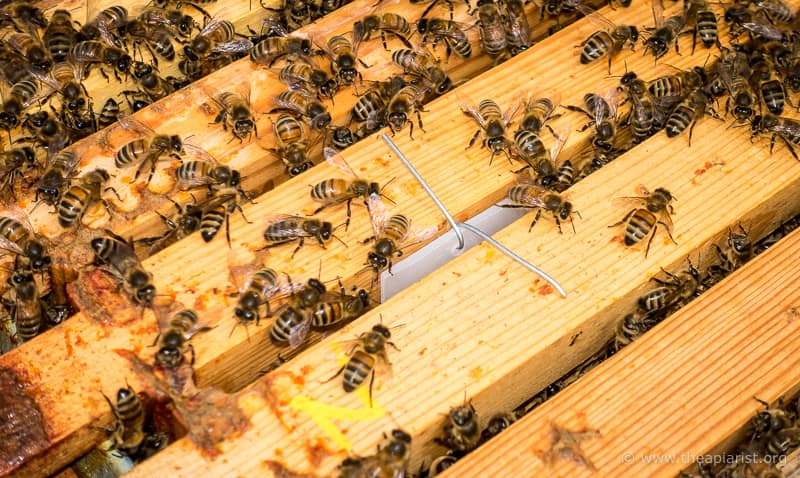
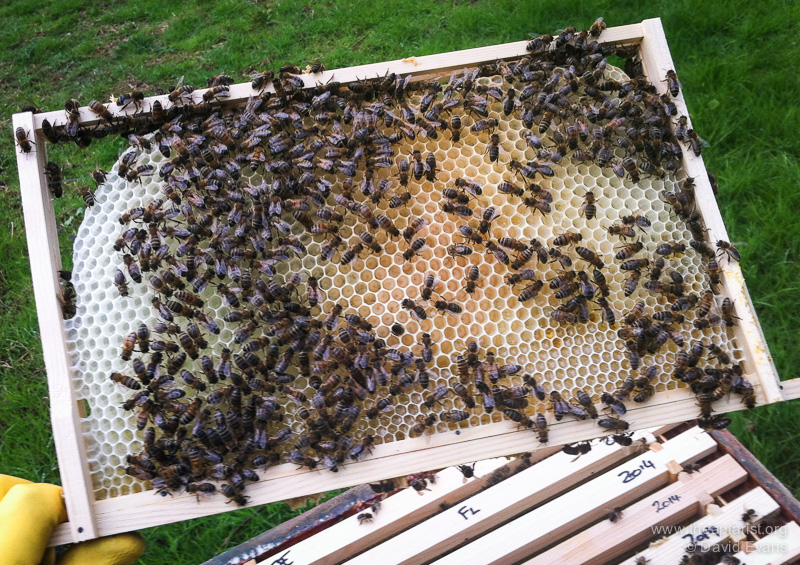

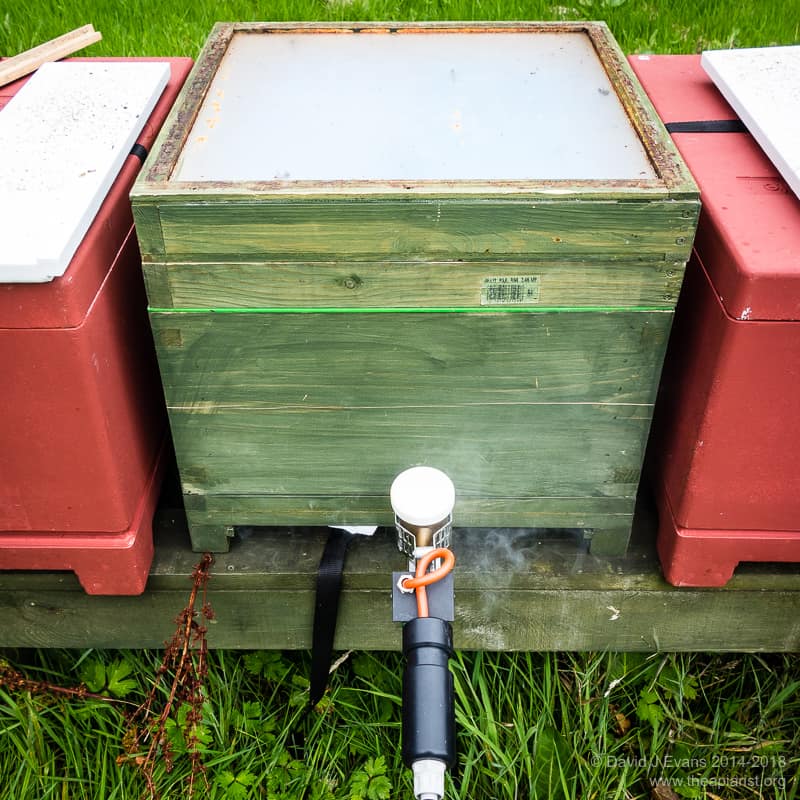
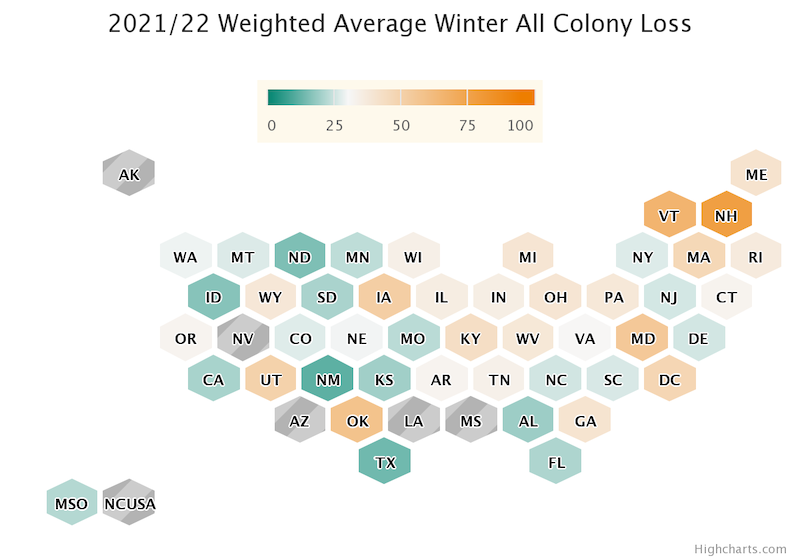
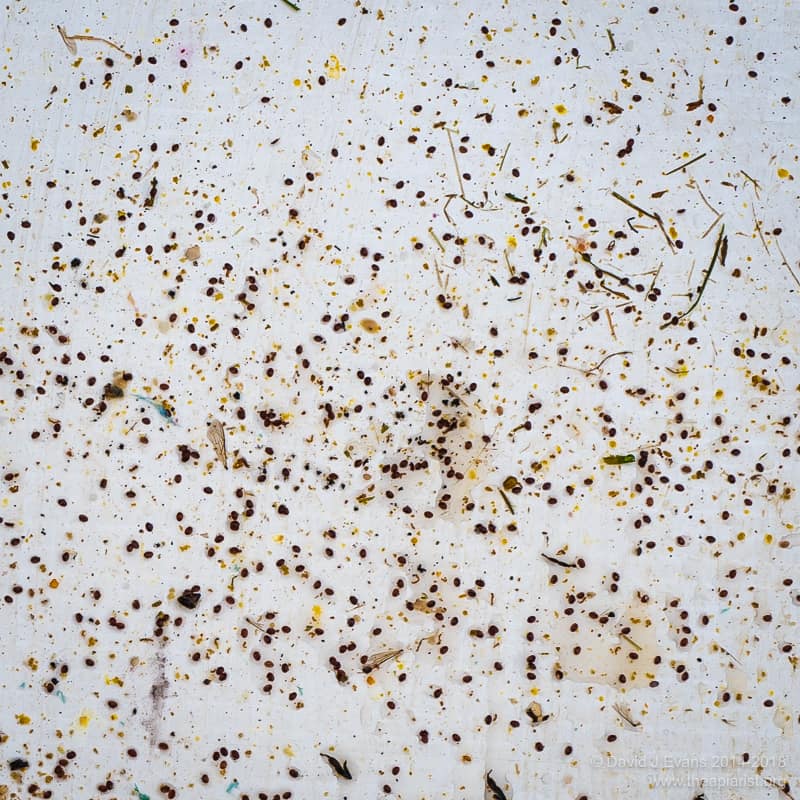
Join the discussion ...